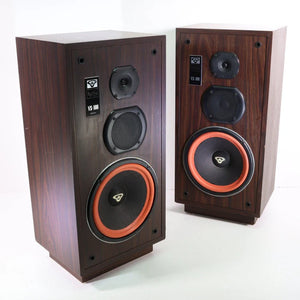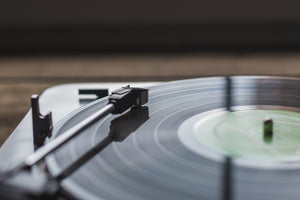We are unable to reply to comments, so please message us directly if you have a specific question regarding products, shipping costs, etc. Our office number is (480) 207-1511. Our email is hello@spencertified.com. You can also message us on Facebook. Commonly asked questions and answers can be found on our FAQs page here.

What is a 3 Head Cassette Deck Player and Recorder? | 3 Heads Versus 2 Heads

3 Head Cassette Decks Explained
Have you ever heard of a 3 head cassette deck? They are used to obtain impressive playback audio fidelity and optimized recording quality and accuracy.
Ejecting and inserting cassette tapes, to play or record, you probably have seen that small shiny metal box (a transducer that converts electrical signals to magnetic signals) at the bottom of the deck more times than you can count...
Here is the difference between a traditional 2 head and high-end 3 head cassette deck:
- Two head cassette decks have a dedicated erase head positioned before a dual functioning playback and record head.
- Three head cassette decks have a dedicated erase head (number 1), dedicated record head (number 2), and then a dedicated playback head (number 3).
The following advantages can be found in a 3 head versus 2 head configuration:
- The record head (including engineered gap size) is optimized purely for recording.
- The playback head (including engineered gap size) is optimized purely for playback.
- Monitoring ability (when available on unit) in near real-time of actual recording, not available with 2 head configuration.
- Fine calibration of recording during playback using a monitor function.
- You will get better playback quality and better recording quality.
What is head optimization all about? Producing the best frequency response (sound range from low to high) and most accurate reproduction of that sound!
What is monitoring? 3 head tape monitoring (through a monitor function) allows you to hear the recording on the actual tape, while recording is in progress. On a traditional 2 head deck you have to wait till finishing the recording, stopping the tape, then playing the tape back without recording functioning to hear how that recording truly sounds.
Monitoring in near real-time on a 3 head is accomplished with the third head being separated from the record head allowing playback immediately after the recording head functions. Two head cassette decks do not have this ability since a dual function head can only do one function at a time (record or playback).
Fine tuning adjustments (such as bias an level settings) while recording is also a big advantage of a three head cassette deck since fine adjustments can be made while recording, instead of having to wait till recording is finished to evaluate adjustments necessary.
In Summary, a 2 head cassette deck is fine for casual listening and recording enjoyment, however a 3 head deck will take you to the next level. The 3 head offers superior sound playback and recording fidelity and near real-time recording monitoring along with fine adjustments on the spot.
SpenCertified has all the cassette decks to meet your needs!
Click here to view our in-stock 3 head cassette decks HERE



Leave a comment